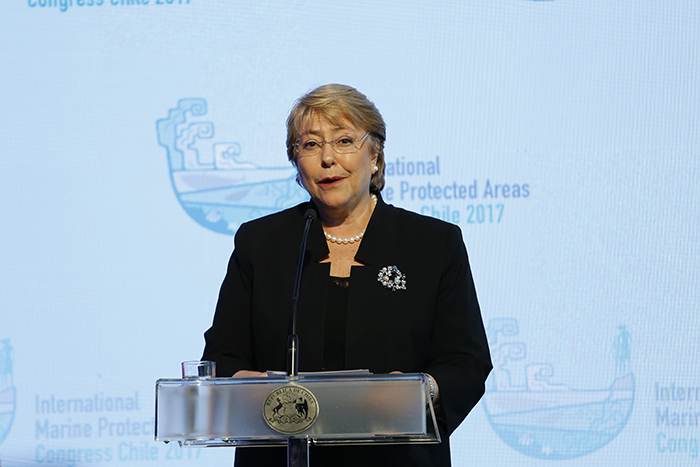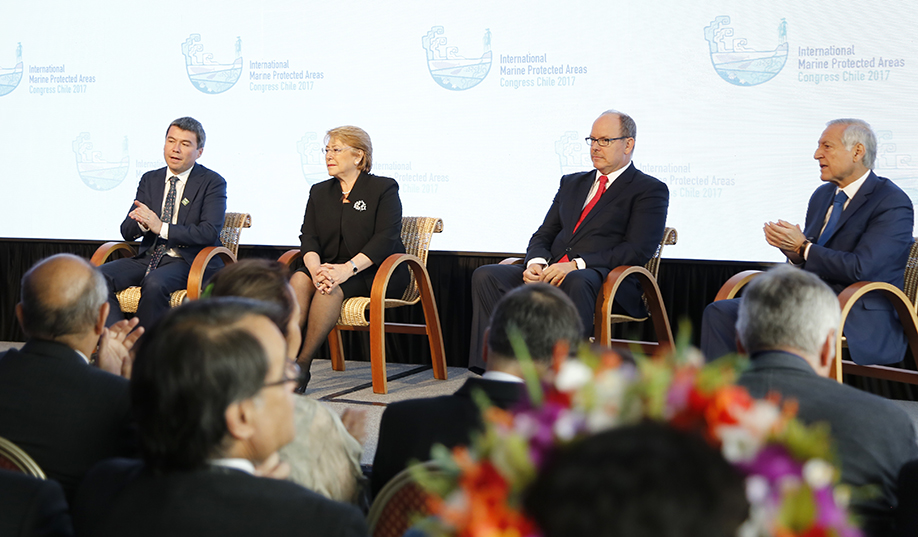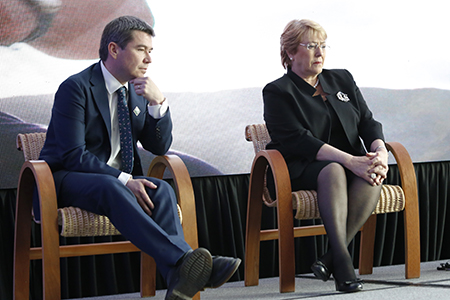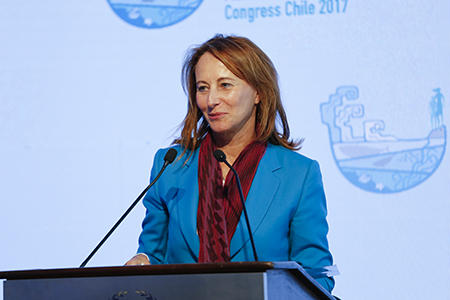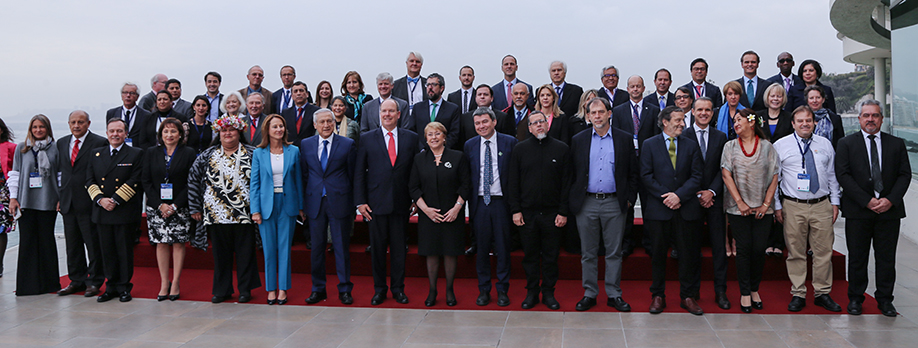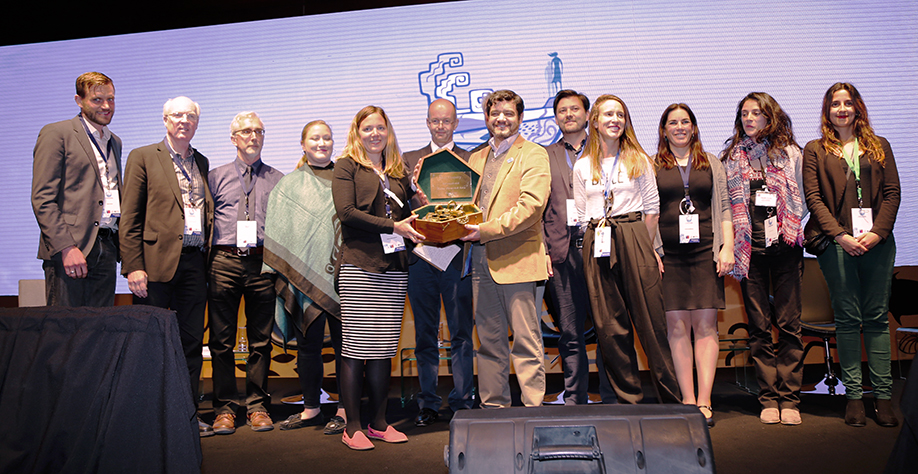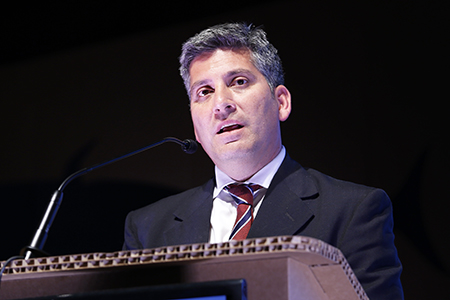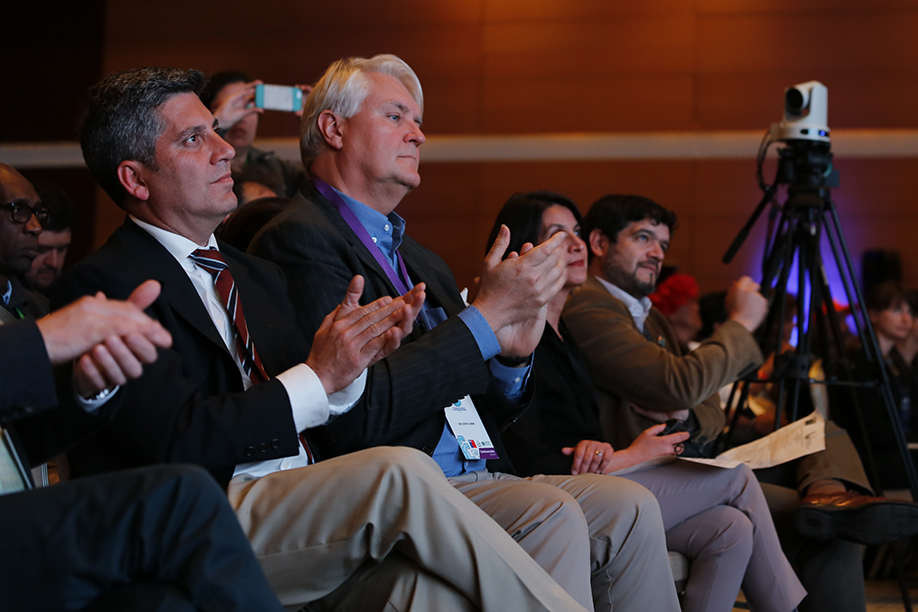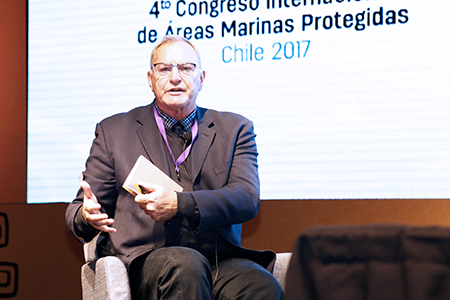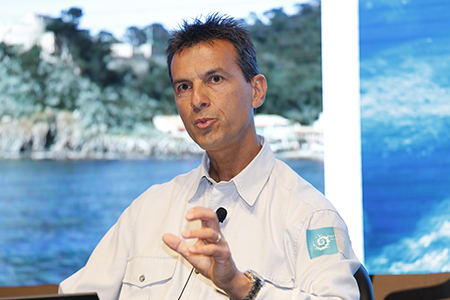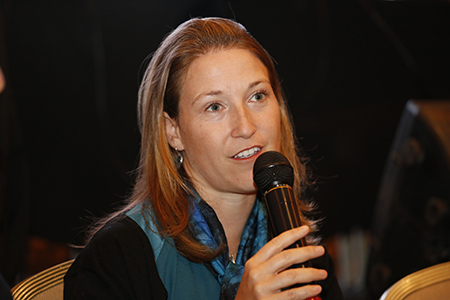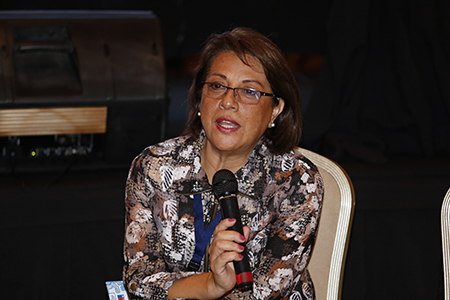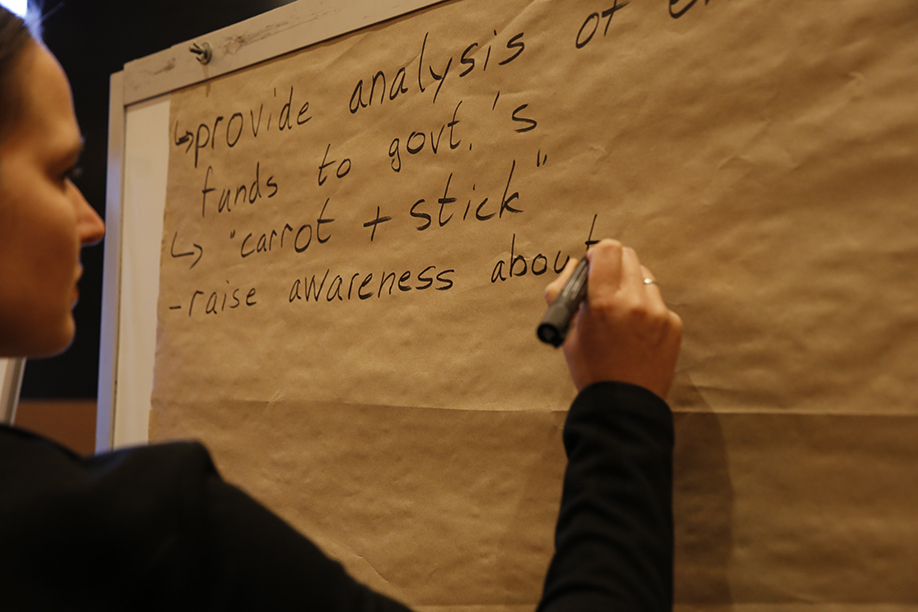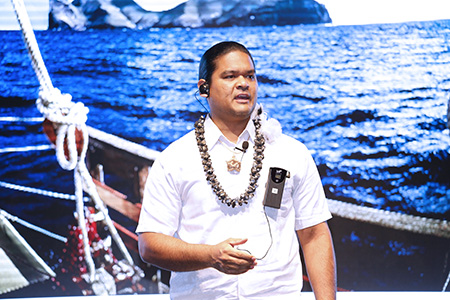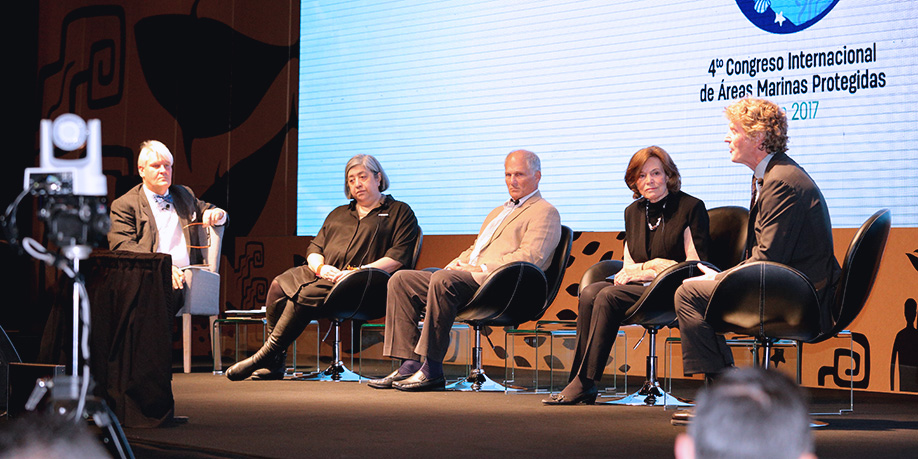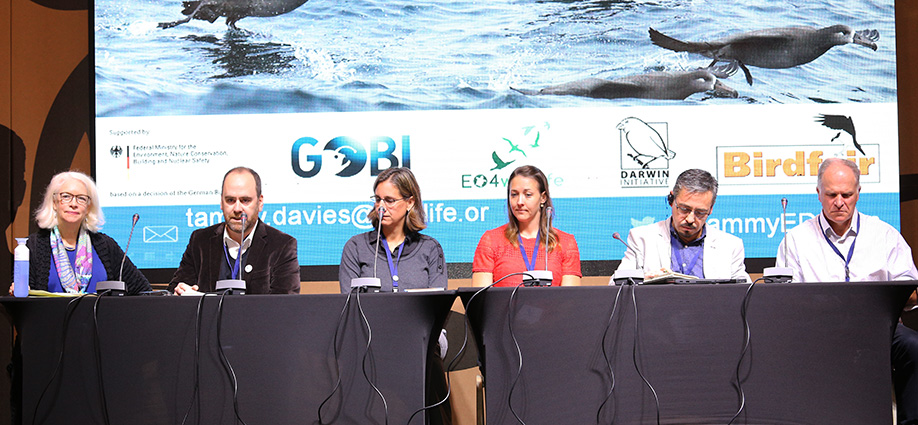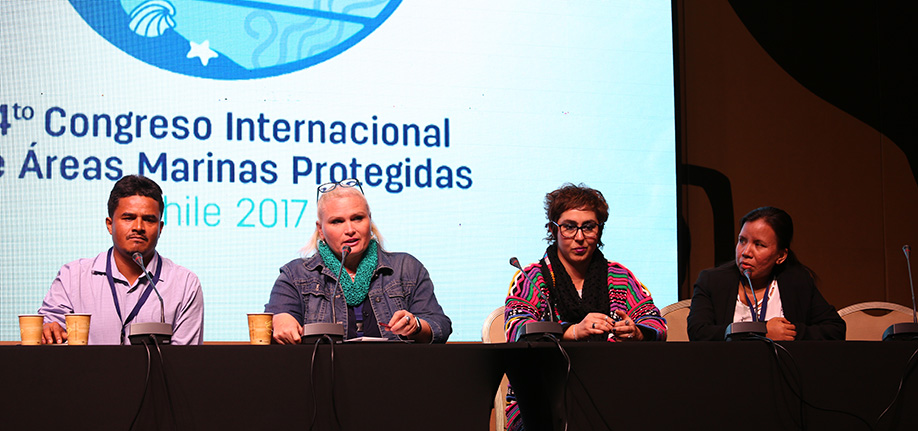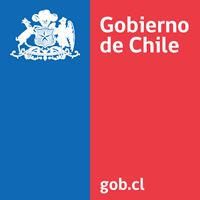4th International Marine Protected Areas Congress (IMPAC4)
Marine Protected Areas: Bringing the People and Ocean Together
5-9 September 2017 | La Serena – Coquimbo and Valparaíso, Chile
Summary Highlights of the Meeting
Saturday, 9 September 2017
The fourth International Marine Protected Areas Congress (IMPAC4) high-level meeting took place in Valparaiso, Chile, on Saturday, 9 September 2017. Heads of State, ministers and other dignitaries gathered to discuss the outcomes of IMPAC4 and assess the way forward. In the morning, participants heard keynote addresses from: H.S.H. Prince Albert II of Monaco, who said effective MPA management depends on specific criteria for protection; and, Michelle Bachelet, President of the Republic of Chile, who said joint and coordinated action is required to address the needs of our planet and the message is clear, “it is worth it, and it is possible.” Participants also heard keynote speeches from: Heraldo Muñoz, Minister of Foreign Affairs, Chile; Marcelo Mena, Minister of the Environment, Chile; Guido Girardi, Senator and Chairman of the Future Challenges Commission; and, Ségolène Royal, President, UN Framework Convention on Climate Change (UNFCCC) COP21 and French Ambassador to the Arctic and Antarctic Poles. Panel discussions also took place on: the report on the main results and recommendations from IMPAC4; MPAs and ocean conservation as climate action; and, integrating local communities and other key stakeholders in the creation and effective management of MPAs. The meeting finished with a Call for Action on MPAs, with a number of countries and organizations taking the floor to express their support, including: Argentina; Brazil; Uruguay; Gabon; Peru; France; United Kingdom; the UN Food and Agriculture Organization; UN Development Programme; and, the Transatlantic Partnership of Marine Protected Areas. Following closing statements, the high-level meeting was closed at 6:41 PM |
||
IISD Reporting Services, through its ENB+ Meeting Coverage, provided daily web coverage and a summary report from the 4th International Marine Protected Areas Congress (IMPAC4). The summary report is now available in HTML and PDF. Photos by IISD/ENB | Ángeles Estrada + Visit the web coverage for Saturday, 9 September 2017 |
||
|
|
|
|
|
|
Friday, 8 September 2017
The final day of the fourth International Marine Protected Areas Congress (IMPAC4) opened in La Serena, Chile, on Friday, 8 September 2017. The day saw many events taking place, all addressing the theme, ‘Our Shared Vision.’ A plenary session took place in the morning, followed by the workshops and symposia. This was followed by a closing plenary session. The high-level meeting will take place on Saturday, 9 September 2017, in Valparaiso, Chile. The morning’s plenary session saw a panel discussion on the day’s theme, with panel members discussing key actions needed to continue ensuring successful management of marine protected areas (MPAs) and the obstacles faced. Key issues considered included: equitable and effective achievement of the goals under the Aichi Biodiversity Targets and the Sustainable Development Goals (SDGs); increased coordination within regions; engaging youth; illegal fishing; and, local capacity building. Highlights from the symposia included discussions on: assessing advances towards achieving the Aichi Biodiversity Targets in 2020 and the SDGs in 2030; indigenous, provincial, and federal governments integrating marine spatial plans and MPAs in Canada; Antarctic MPAs; and, meeting the 2020 targets in Canada. Workshops addressed: twinning and partnerships, as well as tools to enhance collaboration between MPAs; and, guidance for MPA managers and planners on marine mammal protection, and marine renewable energy suitability and siting. The closing session followed, with participants hearing a wrap-up of the key messages that had emerged during the course of the week. There was a report back on the IMPAC4 activities that had taken place during the week, such as ‘Our Science Camp.’ A musical performance closed the plenary. |
||
IISD Reporting Services, through its ENB+ Meeting Coverage, provided daily web coverage and a summary report from the 4th International Marine Protected Areas Congress (IMPAC4). Photos by IISD/ENB | Ángeles Estrada + Visit the web coverage for Friday, 8 September 2017 |
||
|
|
|
|
Thursday, 7 September 2017
The third day of the fourth International Marine Protected Areas Congress (IMPAC4) met in La Serena, Chile, on Thursday, 7 September 2017. The day saw many events taking place, addressing the theme, ‘Effective/Successful Management.’ A plenary session took place in the morning, followed by a number of symposia and workshops throughout the day. The morning’s plenary session saw a panel discussion on the day’s theme, with panel members discussing key issues around successful management of marine protected areas (MPAs), while also noting different management models. Key issues considered by the panel included: enforcement versus education for compliance with MPAs; addressing “intense public use” within MPAs; community engagement and bottom-up approaches to management; and, monitoring and evaluation. Panelists also highlighted the recent publication of the IUCN guidelines on MPA management, as well as management issues around large-scale MPAs. Highlights from the symposia included discussions on: The role of MPAs in achieving ocean health and sustainable blue economies; building regional public-private alliances for sustainable financing of long-term conservation actions in the Eastern Tropical Pacific and the Caribbean Sea; the role of MPAs in achieving ocean health and sustainable blue economies; and, promoting innovative approaches to marine conservation and encouraging sustainable patterns of development by deploying a wide scope of actions. Workshops addressed: harnessing citizen behaviour change to support marine conservation; MPAs and promoting small-scale enterprises that support on complementary marine conservation strategies; monitoring, evaluation and reporting for MPA management; and, solutions for MPA financing. Other topics included ocean noise, ecologically or biologically significant marine areas (EBSAs), and sustainable financing. |
||
IISD Reporting Services, through its ENB+ Meeting Coverage, provided daily web coverage and a summary report from the 4th International Marine Protected Areas Congress (IMPAC4). Photos by IISD/ENB | Ángeles Estrada + Visit the web coverage for Thursday, 7 September 2017 |
||
|
|
|
|
|
Wednesday, 6 September 2017
The second day of the fourth International Marine Protected Areas Congress (IMPAC4) convened in La Serena, Chile, on Wednesday, 6 September 2017 on the theme, ‘Marine Protected Areas (MPAs) and Coastal Communities.’ The day included a plenary session in the morning, and a number of symposia, workshops, oral presentations, and poster presentations taking place throughout the day. Speed talks and knowledge cafés occurred in the afternoon and evening. Highlights from the symposia included discussions on: civil society networking for marine conservation in the Southern Cone; MPAs and food security; and, protecting vulnerable marine ecosystems in the high seas from bottom fishing impacts. Workshop highlights included discussions on citizen science for MPAs, and indigenous communities and MPAs. Some workshops also undertook exercises on issues including: enhancing South-South cooperation towards global MPA targets in South America and the Caribbean; methodologies, experiences and vision to improve the educational managed marine area tool box; and, improving the performance of Marine and Coastal Protected Areas through the IUCN Green List. |
||
IISD Reporting Services, through its ENB+ Meeting Coverage, provided daily web coverage and a summary report from the 4th International Marine Protected Areas Congress (IMPAC4). Photos by IISD/ENB | Ángeles Estrada + Visit the web coverage for Wednesday, 6 September 2017 |
||
|
|
|
 |
||
Tueday, 5 September 2017
The first full day of the fourth International Marine Protected Areas Congress (IMPAC4) convened in La Serena, Chile on Tuesday, 5 September 2017. Convened around the theme, ‘Marine Protected Areas (MPAs) and Global Change,’ the day saw many events taking place with a plenary session in the morning, and a number of symposia, workshops, oral presentations, knowledge cafés and poster presentations taking place throughout the day. The morning’s plenary session saw a panel discussion on the day’s theme, with participants highlighting the challenges the world’s oceans face and the roles MPAs can play in addressing these challenges. Key points included: MPAs provide “safe havens” for threatened and vulnerable marine species; multi-tiered approaches to managing MPAs can provide robust results; and, that stories and imagery can inspire action and change for ocean conservation. Highlights from the symposia included discussions on: MPAs and climate change; the role and future of ecologically or biologically significant marine areas (EBSAs); taking fisheries management and MPAs to scale; coastal reserves networks; multiple use MPAs as an opportunity to ally conservation, sustainable fisheries and community development in low governance environments; and, achieving Aichi Biodiversity Target 11 in marine and coastal areas. Workshop highlights included an exercise on methodologies to choose MPA IUCN categories based on ecosystem services, and discussions on steps towards a transatlantic partnership of MPAs. Other workshops that took place included the role of MPAs as natural solutions, and incorporating coral ecological services and functions valuation into compensatory mitigation for reef damage. |
||
IISD Reporting Services, through its ENB+ Meeting Coverage, provided daily web coverage and a summary report from the 4th International Marine Protected Areas Congress (IMPAC4). Photos by IISD/ENB | Ángeles Estrada + Visit the web coverage for Tuesday, 5 September 2017 |
||
|
|
|
|
|
|


